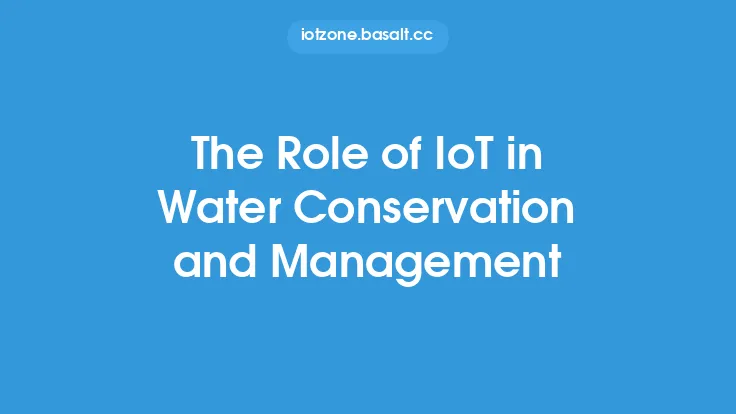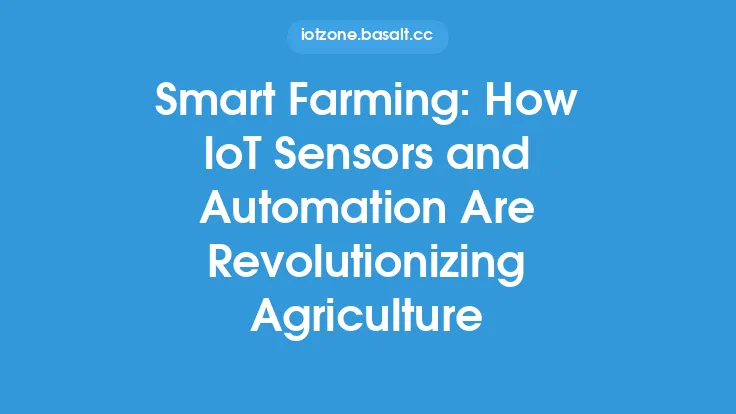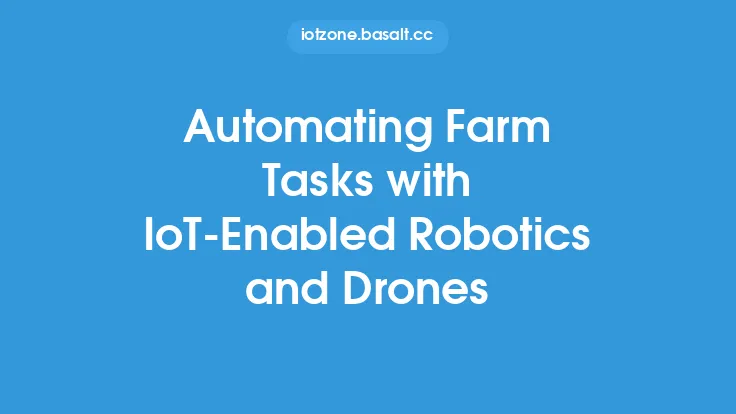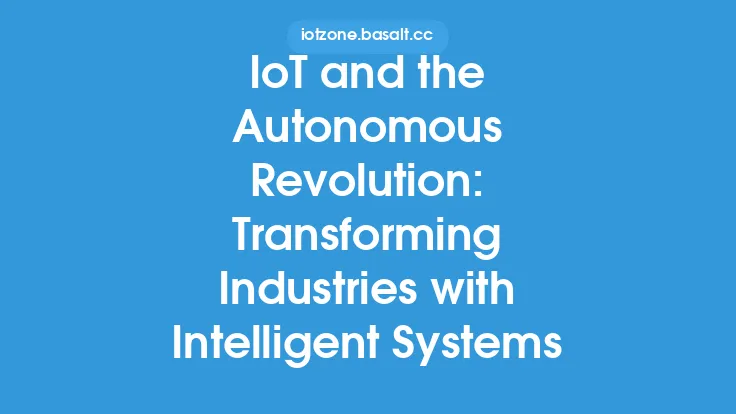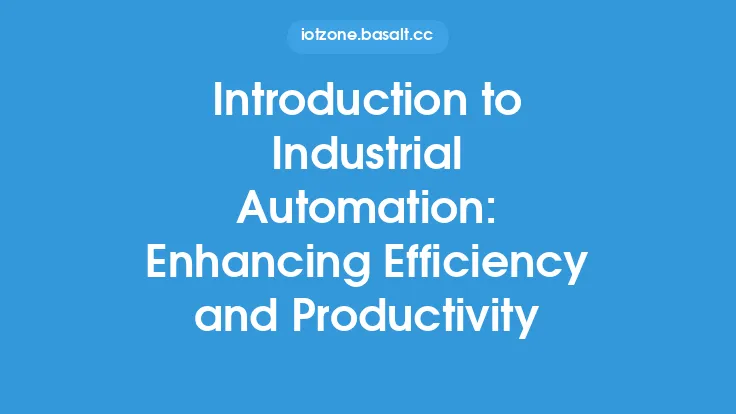The integration of Internet of Things (IoT) technology in farming has revolutionized the way crops are managed, leading to increased efficiency, productivity, and sustainability. Precision farming, a key application of IoT in agriculture, involves the use of advanced technology and data analysis to optimize crop yields and resource management. This approach enables farmers to make informed decisions, reduce waste, and promote eco-friendly practices.
Introduction to Precision Farming
Precision farming is an agricultural practice that leverages IoT devices, sensors, and data analytics to monitor and manage crops, soil, and weather conditions. This approach allows farmers to collect and analyze data on factors such as temperature, humidity, soil moisture, and crop health, enabling them to make data-driven decisions. By using precision farming techniques, farmers can optimize crop yields, reduce water and fertilizer consumption, and minimize the environmental impact of farming.
Key Components of Precision Farming
Several key components are involved in precision farming, including:
- IoT Sensors: These devices collect data on various parameters such as soil moisture, temperature, and crop health. Sensors can be placed in the field, on farm equipment, or even on drones.
- Data Analytics: The data collected from IoT sensors is analyzed using advanced algorithms and machine learning techniques to provide insights on crop health, soil conditions, and weather patterns.
- GPS and Mapping: Global Positioning System (GPS) technology and mapping tools are used to create detailed maps of the farm, allowing farmers to track crop yields, soil conditions, and equipment usage.
- Automation and Control: IoT-enabled automation and control systems enable farmers to remotely monitor and control farm equipment, irrigation systems, and other farm operations.
Benefits of Precision Farming
The benefits of precision farming are numerous, including:
- Increased Crop Yields: By optimizing soil conditions, water usage, and fertilizer application, farmers can increase crop yields and improve overall productivity.
- Reduced Water Consumption: Precision farming techniques such as precision irrigation and soil moisture monitoring help reduce water waste and optimize water usage.
- Improved Resource Management: By analyzing data on soil conditions, crop health, and weather patterns, farmers can make informed decisions on fertilizer application, pest control, and equipment usage.
- Enhanced Sustainability: Precision farming promotes eco-friendly practices by reducing waste, minimizing the use of chemical fertilizers and pesticides, and promoting soil conservation.
Technical Aspects of Precision Farming
From a technical perspective, precision farming involves the integration of various IoT devices, sensors, and data analytics platforms. Some of the key technologies used in precision farming include:
- Wireless Sensor Networks (WSNs): WSNs are used to collect data from IoT sensors and transmit it to a central server or cloud platform for analysis.
- Cloud Computing: Cloud computing platforms are used to store, process, and analyze large amounts of data collected from IoT sensors and other sources.
- Machine Learning and Artificial Intelligence: Machine learning and AI algorithms are used to analyze data and provide insights on crop health, soil conditions, and weather patterns.
- Internet of Things (IoT) Protocols: IoT protocols such as MQTT, CoAP, and HTTP are used to enable communication between IoT devices and the cloud or central server.
Implementation and Adoption of Precision Farming
The implementation and adoption of precision farming techniques require a significant investment in technology, infrastructure, and training. However, the benefits of precision farming far outweigh the costs, and many farmers are already adopting these techniques to improve their operations. Some of the key factors driving the adoption of precision farming include:
- Government Initiatives: Governments around the world are launching initiatives to promote the adoption of precision farming techniques and provide support to farmers.
- Technological Advancements: Advances in IoT, data analytics, and cloud computing are making precision farming more accessible and affordable for farmers.
- Environmental Concerns: The growing concern about environmental sustainability and the need to reduce waste and promote eco-friendly practices are driving the adoption of precision farming techniques.
Challenges and Limitations of Precision Farming
While precision farming offers numerous benefits, there are also several challenges and limitations to its adoption, including:
- High Initial Investment: The initial investment in precision farming technology and infrastructure can be prohibitively expensive for small-scale farmers.
- Data Management: The large amounts of data generated by IoT sensors and other sources can be difficult to manage and analyze, requiring significant expertise and resources.
- Cybersecurity: The use of IoT devices and cloud computing platforms in precision farming raises concerns about cybersecurity and the potential for data breaches.
- Interoperability: The lack of standardization and interoperability between different IoT devices and platforms can make it difficult to integrate precision farming systems.
Conclusion
Precision farming with IoT is a powerful approach to enhancing crop yields and resource management in agriculture. By leveraging advanced technology and data analysis, farmers can make informed decisions, reduce waste, and promote eco-friendly practices. While there are challenges and limitations to the adoption of precision farming, the benefits far outweigh the costs, and many farmers are already adopting these techniques to improve their operations. As technology continues to evolve and become more accessible, precision farming is likely to play an increasingly important role in the future of agriculture.

